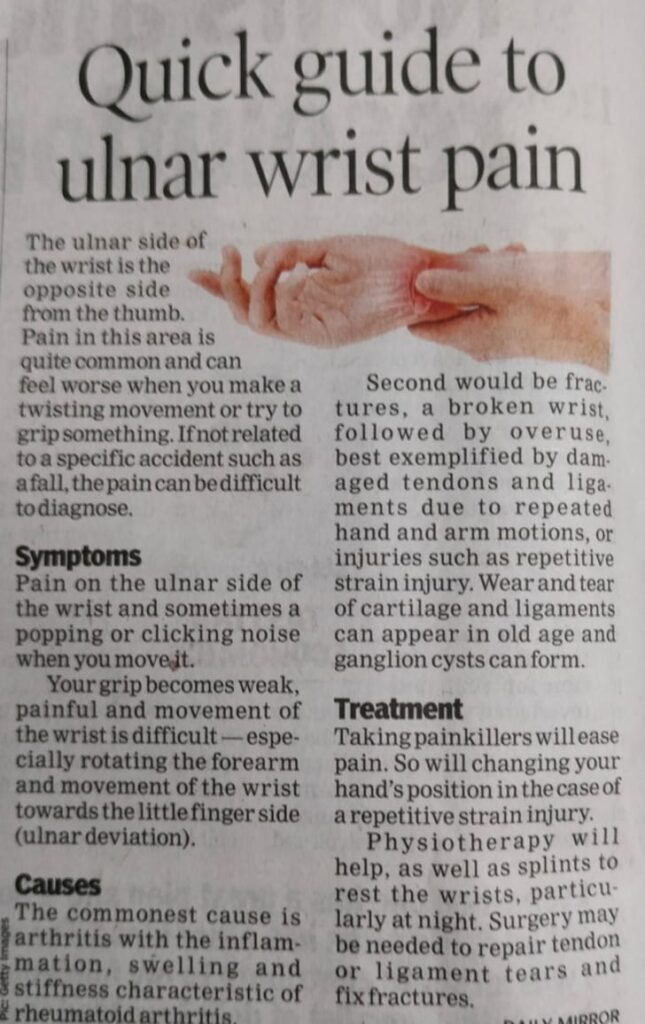Frozen shoulder is a condition that affects your shoulder joint. It usually involves pain and stiffness that develops gradually, gets worse and then finally goes away. This can take anywhere from a year to 3 years.
Your shoulder is made up of three bones that form a ball-and-socket joint. They are your upper arm (humerus), shoulder blade (scapula), and collarbone (clavicle). There’s also tissue surrounding your shoulder joint that holds everything together. This is called the shoulder capsule.
With frozen shoulder, the capsule becomes so thick and tight that it’s hard to move. Bands of scar tissue form and there’s less of a liquid called synovial fluid to keep the joint lubricated. These things limit motion even more.
Symptoms:
The main symptoms of a frozen shoulder are pain and stiffness that make it difficult or impossible to move it.
If you have frozen shoulder, you’ll likely feel a dull or achy pain in one shoulder. You might also feel the pain in the shoulder muscles that wrap around the top of your arm. You might feel the same sensation in your upper arm. Your pain could get worse at night, which can make it hard to sleep.
You’ll typically go through three phases with a frozen shoulder. Each has its own unique symptoms and timeline.
Freezing stage:
• You develop a pain (sometimes severe) in your shoulder any time you move it.
• It slowly gets worse over time and may hurt more at night.
• This can last anywhere from 6 to 9 months.
• You’re limited in how far you can move your shoulder.
Frozen stage:
• Your pain might get better but your stiffness gets worse.
• Moving your shoulder becomes more difficult and it becomes harder to get through daily activities.
• This stage can last 4-12 months.
Thawing stage:
• Your range of motion starts to go back to normal.
• This can take anywhere from 6 months to 2 years.
• Causes
• It’s not clear why some people develop it, but some groups are more at risk.
• Frozen shoulder happens more often in women than men, and you’re more likely to get it if you’re between the ages of 40 and 60. Your risk might also go up if you’re in the process of recovering from a medical condition like a stroke, or surgery like a mastectomy that keeps you from moving your arm.
• Certain medical conditions can increase your risk too. You may also be more likely to get frozen shoulder if you have diabetes. About 10% to 20% of people with diabetes get frozen shoulder. Other medical problems like heart disease, thyroid disease, or Parkinson’s disease are linked to frozen shoulder, too.
Diagnosis
To diagnose frozen shoulder, your doctor will give you a physical exam. They’ll check it to see how badly it hurts and how far it moves. During the “active” part of the exam, they’ll let you move your shoulder on your own. During the “passive” portion, they’ll move it for you, and note the differences.
Your doctor may decide you need an injection of anaesthetics in your shoulder. This is a medication that will numb the pain so that they can better judge your active and passive ranges of motion.
A physical exam is usually enough to diagnose frozen shoulder, but your doctor may also order imaging tests such as X-rays, ultrasound, or MRI to rule out other problems like arthritis or a torn rotator cuff that can also cause pain and limit how far it moves.
Treatment
Over-the-counter nonsteroidal anti-inflammatory drugs (NSAIDs) like aspirin or ibuprofen can help relieve the pain and inflammation in your shoulder. If they don’t help, your doctor might prescribe a stronger medication.
Your treatment might also include going to a physical therapist for strengthening and stretching exercises to improve your range of motion.
If your symptoms are intense or don’t improve over time, your doctor might recommend other kinds of treatments, including:
• A corticosteroid injection in your shoulder joint to reduce your pain and improve your range of motion.
• Joint distension. This means your doctor will inject sterile water into your shoulder capsule to stretch it. This can help you move your shoulder more easily.
• Physical therapy. Results with this are mixed, and it may be more useful during certain phases of frozen shoulder than others.
• Surgery. This is very rarely necessary to treat frozen shoulder. But if other treatments haven’t helped, your doctor may suggest surgery. It likely would be an arthroscopic procedure. That means it’s done with lighted, pencil-sized tools that are inserted through tiny cuts in your shoulder.
• Shoulder manipulation can help loosen up your shoulder tissue, but is very rarely done anymore because arthroscopic surgery has replaced it. Surgeons would forcefully move the shoulder under general anesthesia. With this method, there was an increased risk of complications including fractures.











